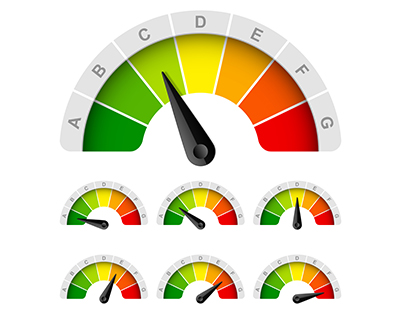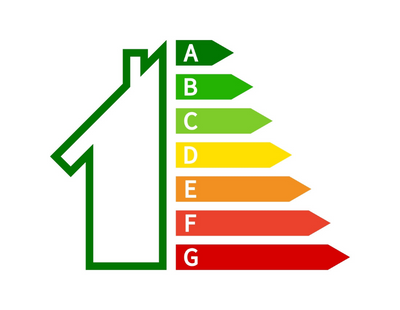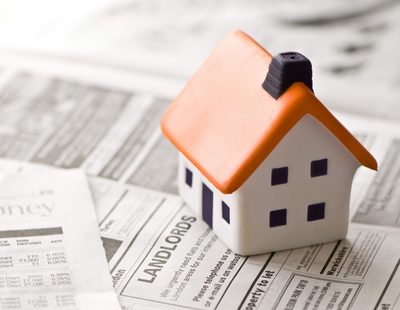According to the government’s official House Price Index, of the Gwynedd properties sold in 2020, the average year the properties were built was 1960.
Following closely behind was Ceredigion, another Welsh county, with an average EPC rating of 57.5. Much like Gwynedd, properties were built from stone and slate, with the addition of thatch. Modern houses in Ceredigion also reflect the Welsh heritage and culture.
The government price index reveals that of the houses sold ihere n 2020, the average year the properties were built was 1968.
Improving a property's EPC rating can benefit both landlords and tenants, claims Muve.
David Jabari, chief executive, says: “Studies have found that improving the energy efficiency of a property can boost its value by as much as 20 per cent when going from an F/G rating to a C rating.
“Improving your EPC rating is a great way to reduce energy bills. If your tenants pay the bills, a property with a higher EPC rating will be more attractive than one with a low EPC rating. A higher EPC rating means you and your tenants are less likely to deal with maintenance issues such as dampness, mould, condensation and frozen pipes.
“Another benefit of moving into an energy-efficient property or improving a property’s EPC rating is that more high-street mortgage lenders are handing out green mortgages, giving you a better interest rate or cashback on your mortgage, on top of saving from your energy bills.”
Based on results from PropertyData for the average cost of rent per area each month, if a landlord improved an F/G-rated two-bed property in Gwynedd to a C rating, they could charge an extra £130 each month based on the 20 per cent increase in value.
For a three-bed property in West Devon, landlords could charge an extra £177 monthly if they improved the energy certificate from an F/G to a C.
The most environmentally friendly area is Tower Hamlets, with an average EPC rating of 74.8. This East London borough has many newly built high-rise apartments and offices in Canary Wharf, for example, as well as many older Victorian and Edwardian-era buildings in the Whitechapel and Bethnal Green areas.
In recent years, there has been an increased focus on sustainable building practices in the area, with many new buildings incorporating environmentally friendly materials such as recycled steel and timber, low-energy insulation and solar panels.
The second most environmentally friendly area is the City of London. However, this area has fewer residential properties compared to other parts of London due to it being primarily a business district. Many residential properties in the City are high-end apartments or penthouses in modern developments.
Muve shares its top tips for making a property more energy efficient:
- Insulate your walls, loft and floor to reduce any heat loss and transfer, keeping your home warm in the winter and cool in the summer;
- Upgrading your windows to double glazing, Low-E glass, or thermally broken window frames will stop heat from escaping and any draughts;
- Install energy-efficient heating systems. Consider swapping your boiler for a condensed boiler, heat pump, or biomass boiler and ensure proper insulation for pipes and hot water tanks;
- Switch to LED or CFL lights, which consume less energy and last longer. Make sure you turn off the lights when you leave a room or install a motion detector or timer to automatically turn the lights off;
- Install solar panels to generate clean and sustainable energy for your property, lowering your carbon footprint;
- And finally, fix any leaks to improve water waste.
Want to comment on this story? Our focus is on providing a platform for you to share your insights and views and we welcome contributions.
If any post is considered to victimise, harass, degrade or intimidate an individual or group of individuals, then the post may be deleted and the individual immediately banned from posting in future.
Please help us by reporting comments you consider to be unduly offensive so we can review and take action if necessary. Thank you.















.png)





Join the conversation
Jump to latest comment and add your reply
Interesting analysis based on the 21 million domestic EPCs that now sit for all to see on our country’s national database. The real issue here is one mortgagability. The Minimum Energy Performance of Buildings Bill 2022-23 that is now going though Parliament at speed will require all lenders to have an average EPC of Grade C across their loan book. The simple reality is that landlords and owner occupiers just will not be able to mortgage or re-mortgage (or sell to someone who needs a mortgage) unless the asset is EPC Grade C - and it’s happening right now. This isn’t a 2028 or 2030 issue. It’s at 2023 issue. We all need to get an up to date draft ‘as is’ EPC then get a draft predicted EPC showing how to get to Grade C and then do the upgrade work. That’s insulate the walls, loft or roof and install a lower running cost heating system. Installing a new heating system running off electricity would seem a sensible hedge against tax rises on CO2 pollution producing gas boilers. This is also a clever hedge for when the EPC calculation moves from the current running cost calculation to a CO2 pollution calculation.
Where is everyone in Wales going to live?
Please login to comment